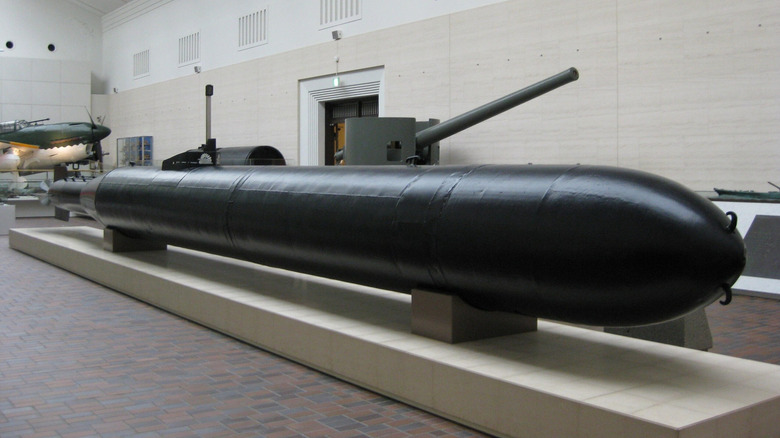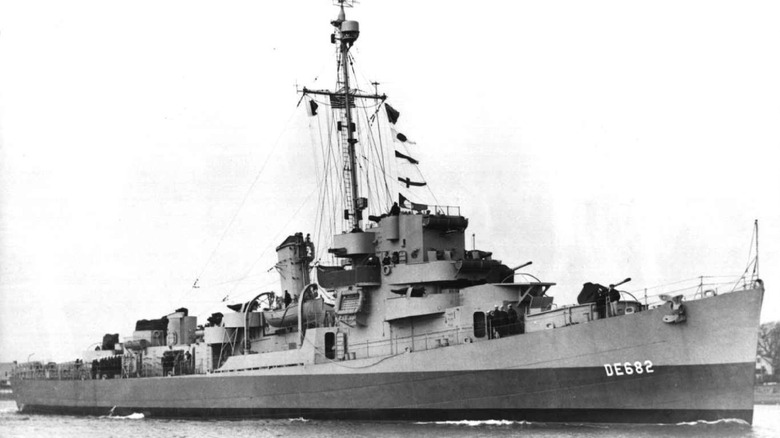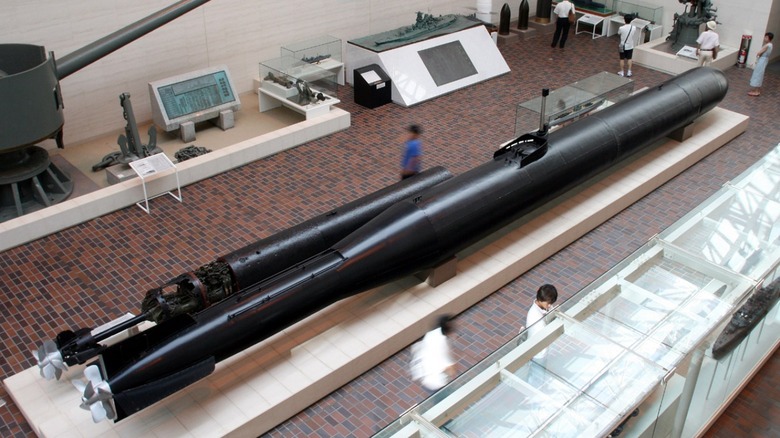World War 2: What Was The Kaiten Torpedo & Did It Sink Any Ships?
During World War II, any deadly new innovation had the potential to help push one side toward victory. Tragically, this focus on new weaponry led to the development of a formidable torpedo in Japan that its operators sacrificed their lives to use. The Kaiten torpedo was developed from the Long Lance torpedo, named for its ability to strike a target from up to 22 miles away. In addition to its length, the Long Lance's warhead also had twice the capacity for explosives compared to any other U.S. torpedo at the time.
The Type 1 Kaiten was essentially the Long Lance torpedo, placed within a container that was large enough for a pilot and 3,420 pounds of explosives. The first ship sunk by one was the USS Mississinewa in Ulithi Atoll in November 1944. Under the command of Captain Philip G. Beck, the ship sank just over three hours after impact. Formidable as it was, though, the Kaiten torpedo project was short-lived and didn't sink many vessels. Still, it remains a fascinating addition to the evolution of naval warfare.
A Kaiten torpedo destroyed the USS Underhill
Around eight months after the destruction of the USS Mississinewa, a Kaiten torpedo claimed another United States naval vessel: the destroyer escort USS Underhill (pictured here). In July 1945, the vessel was in Okinawa in order to seek out and destroy enemy submarines. When the ship was attacked later that month, Underhill was operating as part of a convoy that was traveling to Leyte, an island in the Philippines.
The vessel responded to a disappearing submarine, only to discover that its target wasn't the only vessel in the vicinity. Two Kaiten explosions impacted the ship, causing monstrous damage. The vessel was torn into two halves by the blasts, with Lt. Cmdr. Robert M. Newcomb killed in the attack along with 112 other crew members. What was left afloat of the once-formidable destroyer was intentionally sunk after rescuers saved 125 lives.
In between these two attacks, a third U.S. ship was also sent to the bottom of the ocean by Kaitens in January 1945, although this was a much lower-profile vessel. These are the only targets known to have been outright sunk by these torpedoes. Overall, the Kaiten program certainly succeeded in developing a formidable and fearsome weapon. Yet in terms of reliability, the torpedoes fell drastically short and could be arguably regarded as some of the worst military equipment of World War II.
How the Kaiten torpedoes worked, and why they often didn't
In terms of destructive power and range, the Kaiten Japanese torpedo was dominant during World War II. However, all of this is of limited utility without a dependable way of directing that firepower. What gave the Long Lance its devastating capabilities was the fact that it was powered by oxygen. The United States didn't use weapons like these as, despite their performance, they can also be very volatile.
Design flaws have sunk torpedo ships, and they got in the way of Kaiten operations as well. For one, a Kaiten could explode if seawater got into its engine (which was quite likely). Japanese leadership also originally resisted deploying Kaitens because they for the most part required the pilot to go down with them. In the end, the concept was begrudgingly approved after designers installed escape routes on them. However, these were never used.
Another issue was that Kaitens were dependent on larger submarines to launch them. However, eight of these bigger vessels were eliminated by U.S. forces, meaning a lot of these torpedoes never even got the opportunity to aim for a target. Even if they weren't destroyed, mechanical issues were rife. In a January 1945 attack, 10 of 24 available Kaitens couldn't be used. Stuck controls during training also claimed the life of Hiroshi Kuroki, one of the Kaiten designers. In total, 104 Kaiten pilots were killed.


